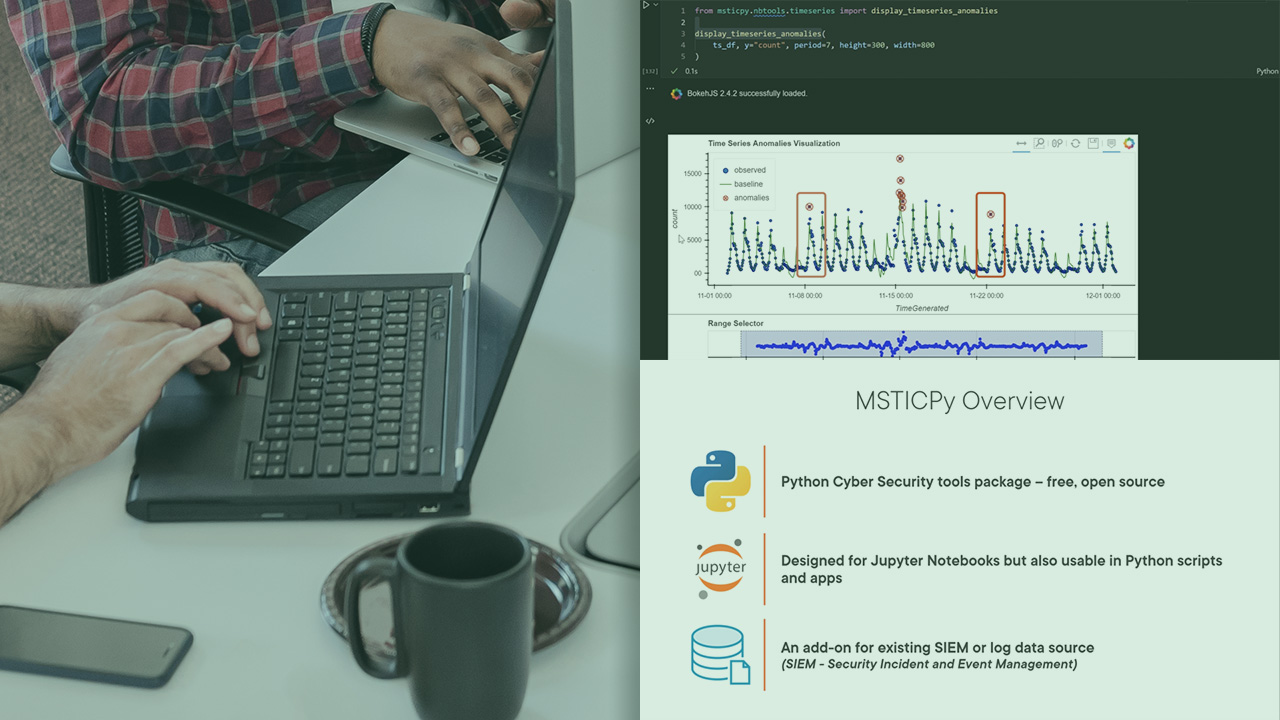- Course
Threat Intelligence with MSTICPy
This course will focus on using MSTICPy in notebooks to detect adversary logons, decode obfuscated scripting attacks, and attempts to establish persistence.

- Course
Threat Intelligence with MSTICPy
This course will focus on using MSTICPy in notebooks to detect adversary logons, decode obfuscated scripting attacks, and attempts to establish persistence.
Get started today
Access this course and other top-rated tech content with one of our business plans.
Try this course for free
Access this course and other top-rated tech content with one of our individual plans.
This course is included in the libraries shown below:
- Security
What you'll learn
MSTICPy is a Python library of CyberSec tools designed for hunting and investigations using Jupyter notebooks. Jupyter notebooks are an ideal tool for CyberSec/SOC work. You can ingest data from multiple sources, analyze, reshape, and visualize the data and add your own commentary.
In this course, Threat Intelligence with MSTICPy, you’ll cover how to utilize MSTICPy to detect against adversary intrusions in an enterprise or cloud environment. First, you’ll learn how to query and analyze network and endpoint logs to identify adversary activity. Next, you’ll analyze logon sessions on a compromised host and identify and decode a scripted attack. Finally, we will pinpoint the way that attacker has enabled a persistent foothold on the host. When you’re finished with this course, you’ll have the skills and knowledge to detect these techniques: T1078.002 - Valid Accounts/Domain Accounts; T1059.001 - Command and Scripting Interpreter: PowerShell; and T1053.005 - Scheduled Task/Job: Scheduled Task, using MSTICPy and Jupyter Notebooks.

